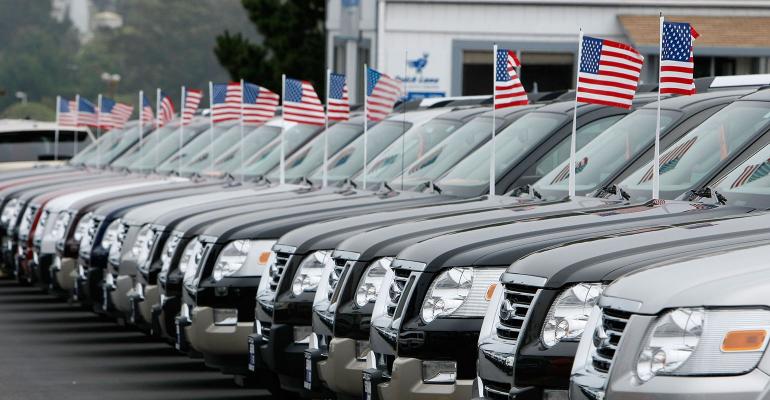Other than real estate, the most expensive purchase most of your clients will make in their lifetimes is a vehicle.
According to the Bureau of Labor Statistics, American households spend about $500 per month on buying, maintaining, and insuring their cars and trucks. That’s $360,000 over a typical 60-year adulthood.
Here are some costly errors even your savviest car-buying clients should avoid:
1. Paying Cash for Cars
With interest rates very low and loan approval chances high, there has likely never been a better time for clients to finance new (or used) vehicle purchases by borrowing the money.
The cash could be better used to pay off higher-interest debt, save for longer-term goals or to serve as an emergency fund for future surprise expenses.
Loan rates are so low that it’s likely the client can invest in even the most conservative vehicles and still outperform the cost of borrowing over the length of the loan.
If for some reason the borrower wants to pay off the vehicle loan early, she is free to do so, with little or no penalty.
The only instances in which it might make sense to pay cash for the vehicle is if the buyer would otherwise receive cash back on the purchase from the dealer, or she is concerned that if she doesn’t use the money to buy the car, she’ll spend it on something she’ll regret.
2. Buying Used Instead of New
We all know that used vehicles are generally less expensive than new and likely will depreciate more slowly in nominal dollars than a higher-priced new vehicle will decline in value.
But new vehicles still have several advantages over buying a used version. First, new vehicles are less likely to need costly repairs, and any repairs are more likely to be covered under the manufacturer’s warranty.
Second, the available loan terms for new vehicles are usually longer and offer lower interest rates than loans for used vehicles. That means lower interest costs and perhaps even smaller monthly payments.
Finally, the safety features on a vehicle that’s even a few years old may pale in comparison to what the new version offers.
3. Buying Instead of Leasing
When a client buys a vehicle and uses a loan to finance the purchase, he is financing the entire purchase price, less any down payment.
But when he leases a vehicle instead, he is only financing the amount the vehicle is expected to depreciate, over the length of the lease (less any down payment).
Leasing will likely provide a lower monthly payment for the client, which means more cash for other more pressing needs.
That lower payment means the client may be able to save on unexpected repair costs, since he can lease a newer and/or more reliable vehicle than what he could afford if he were to pay cash or finance the purchase with a loan.
That said, at the end of the lease the client will have to either return the vehicle to the dealer and look for a new one or purchase the leased vehicle outright. But this is a feature of leasing, not a bug. When the lease ends, the client generally has the option of purchasing the vehicle for the “residual value,” a figure originally established when the client obtained the vehicle.
If that residual value is higher than the market price for other similar cars when the lease ends, the client can give the keys back to the dealer and go purchase a similar vehicle for a lower price (or use that factor to negotiate a lower purchase price for the current vehicle).
If the residual value is lower than the market price at the end of the lease, the client may be able to negotiate a higher price from the dealer, or purchase the vehicle for residual value and then sell it to another dealer or private party.
Just make sure if the client does lease the vehicle, she negotiates the purchase price first, shops around for a good interest rate on the lease, and pays attention to any mileage restrictions.
4. Paying with a Home Equity Line of Credit
Yes, it’s easier to pay for a vehicle with a previously established home equity line of credit than it is to apply for and get a separate loan for the purchase.
But the interest rate on the vehicle loan is likely to be lower than what the HELOC will cost. Plus, the vehicle loan rate is fixed, while the HELOC rate is adjustable and can rise in the future.
Using a specific loan for the vehicle also leaves more of the HELOC available for future borrowing and emergency needs, at which time borrowing against a previously purchased vehicle might be costly or impossible.
Finally, the recent changes to the tax code mean that HELOC interest is not tax-deductible if the loan isn’t used for qualified home improvements. So not only will the HELOC rate likely be higher than the vehicle loan (and possibly rise in the future), the tax advantage has disappeared.
5. Paying More for Fuel Efficiency
Many clients want to own a vehicle that burns as little fuel as possible, perhaps for concerns over the environment. But if they’re paying more for a car or truck just to save money on gas, their math may be off.
Say a client has narrowed the search down to two vehicles: Car A costs $40,000 and gets 25 miles per gallon, and Car B costs $35,000 and gets 20 miles per gallon.
If the client owns the vehicle for five years, drives 15,000 miles per year, and gas is $3.00 per gallon, on average, she will spend $2,250 more for gas on Car B than she would by owning Car A. But she will still end up $2,750 ahead because of the lower initial purchase price of Car B.





